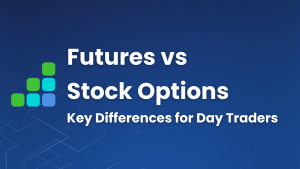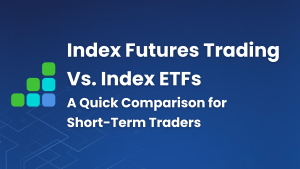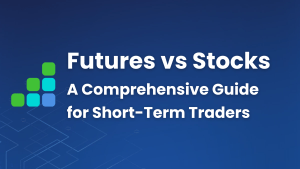FOMO, or the “fear of missing out”, is a well-documented phenomenon in the world of trading. FOMO comes in many forms and shapes and often leads to bad and impulsive trading decisions. The following article will go over how FOMO is responsible for many of the problems that traders deal with on a daily basis.
In its purest form, a trader who is driven by the “fear of missing out” enters trades too early, without waiting for actual confirmation of any trading rules. These traders see price moving and they think that they can “feel” it is going a certain direction, even though their trading rules don’t support the trade idea. They try to come up with reasons why they don’t want to miss a potential trade because it can finally get them out of their losing streak, despite the lack of any confirmation. Essentially, these traders will reason themselves into taking bad trades and justifying it by randomly picking a large reward-risk ratio. Of course, at the point of your trade entry, only the risk is certain, but the potential reward can’t be quantified – especially if you are acting outside the scope of your system.
Alternative FOMO forms
It’s important to note that FOMO can manifest in your trading in many different forms and that entering trades that you shouldn’t be in, is only one form.
Traders who violate their risk principles and take larger than usual positions because they think that their trade “almost can’t lose”, are also acting in a FOMO mindset. You don’t need to swing for the fences as a trader. Yes, it’s great to catch that huge winner, but if you run into a loser, which usually happens when you break your rules, taking too much risk will put you in a bad position.
Greed is what is often behind actions that are classified as Fomo. Greed will push many traders to keep their trades open much longer than they should. It’s good to let your winners run, but if you risk your unrealized profits because you want to make even more, although your profit has been reached based on your strategy, you should get out.
What is behind FOMO?
We mentioned that greed can cause FOMO trading decisions; not wanting to miss a trade, hoping to catch a huge winner, taking excessive amounts of risk and failing to capitalize on your winners are all greed-driven problems.
However, a lack of discipline is what is usually at the core of all those problems. Entering too early because you don’t have the discipline to sit on your hands and wait until you see your edge evolving; being disciplined enough to follow a consistent risk management approach to keep your account volatility under control; choosing stops and profits based on your rules and not based on some arbitrary numbers that make for a good profit. It all comes down to how disciplined you are and how serious you are with regards to trading overall.
Self-awareness is a very much overlooked concept for most people. Auditing yourself to find out what drives your trading decisions, what your goals are with trading and how you believe you can achieve them can already tell you a lot about yourself. Realistic expectations combined with a self-aware character is an essential trait of every successful trader.
When does your FOMO happen most commonly?
In order for you to control your FOMO action and keep you from making mistakes, you have to start monitoring yourself. Once you understand what drives your decisions and when you are more likely to make impulsive trading mistakes, you can pro-actively control them more effectively. Here are the 5 scenarios that lead to FOMO mistakes:
- After a loss
When you want to make back the money you have lost, or when you are in a losing streak, you are more likely to abandon trade rules and look for trades outside of your usual system.
In this context, missing a trade and then wanting to make up for it also falls into this category.
- When volatility spikes
Traders are usually looking for more volatility because they believe that it’s easier to trade when markets are moving fast. Unfortunately, high volatility markets tempt traders into making FOMO driven trading decisions without properly assessing the risk. When price is moving fast, you can very easily get the false impression that the next big move is just around the corner.
- When you watch charts all day long
Staring at price charts all day usually leads to bad trading behavior because you easily get bored or randomly flip through timeframes to find trades. Instead, use price alerts and write trading plans so that you know exactly what you are looking for.
- When you haven’t had a trade in a long time
This is similar to the previous point. Everyone knows the feeling when you haven’t had a trade in a few days and you really want to get in the markets to make some money. You can’t have an edge all the time and you won’t be able to find trades every day. Learning when not to trade is an important lesson.
- When you don’t understand your strategy
Many traders are not clear about their strategy, what defines them as traders and what is their actual edge. Only a trader who is absolutely clear about where he stands and what his trading is can trade with confidence and certainty.
There is a substantial risk of loss in futures trading. past performance is not indicative of future results.















